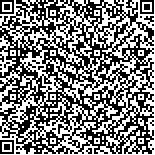| 摘要: |
| 利用实验生态学方法, 通过分析摄食喜好系数、单位体质量摄食量等参数, 研究脉红螺(Rapana venosa)的摄食选择性, 以及饵料种类、温度和个体规格对脉红螺摄食量的影响。结果表明, 脉红螺(壳长100~120mm)具有明显的摄食选择性, 喜食缢蛏(Sinonovacula constrzcta)、竹节蛏(Solen gouldi)和中国蛤蜊(Mactra chinensis), 但不同饵料对其摄食量的影响不显著。随着温度的升高, 不同规格脉红螺的摄食量变化趋势相似, 即温度低于7℃时基本不摄食, 温度高于16℃时开始大量摄食, 22℃左右时达到摄食高峰。不同规格的脉红螺, 随壳长的增加, 单位体质量摄食量逐渐减小。不同壳长的脉红螺(38~108 mm), 随壳长的增加, 最低摄食温度先降低(壳长50~70 mm脉红螺最低摄食温度最低)后升高。本研究为脉红螺的人工养殖提供了理论依据, 同时为脉红螺的生态影响评估提供参考。 |
| 关键词: 脉红螺(Rapana venosa) 温度 饵料 规格 摄食量 摄食选择 |
| DOI:10.11759/hykx20141218001 |
| 分类号: |
| 基金项目:十二五国家科技支撑计划课题(2011BAD13B01); 国家自然科学基金项目(31572636); 国家自然科学基金委员会-山东省人民政府联合资助海洋科学研究中心项目(U1406403); 山东省农业重大应用技术创新课题资助 |
|
| Effect of feeding preferences, temperature, and size on food intake of Rapana venosa |
|
SONG Jun-peng1, FANG Jian-bing2, SONG Hao3,4, ZHANG Tao3, BAN Shao-jun3,4, PAN Yang3,4, LI Zhao-xia1
|
|
1.Qingdao Agricultural University;2.Jimo Changjiang Road Primary School;3.Institute of Oceanology, Chinese Academy of Sciences;4.University of Chinese Academy of Sciences
|
| Abstract: |
| This study was conducted to demonstrate the feeding preferences and the effect of preferences, temperature, and size on the food intake of Rapana venosa by using the feeding preferences coefficient, total food intake, and other parameters. The predation of R. venosa was species selective, with a clear preference for Sinonovacula constricta, Solen gouldi, and Mactra chinensis. The average wet weight consumption rate did not depend on the type of diets. With increasing temperature, the variation in the food intake was consistent among R. venosa species with different shell lengths. The predation of R. venosa started when the temperature reached 7℃ and massively increased at >16℃ and reached a peak at approximately 22℃. For R. venosa with different specifications, along with the increase in shell length, the food intake per unit body weight decreased gradually; the lowest predation temperature decreased initially and then increased. R. venosa with the shell length ranging from 50 to 70 mm had the lowest predation temperature. This study provides a theoretical basis for the culture of R. venosa and a reference for the potential ecological impacts of the invasion of R. venosa to recipient ecosystems. |
| Key words: Rapana venosa temperature baits size feeding selectivity food consumption |
